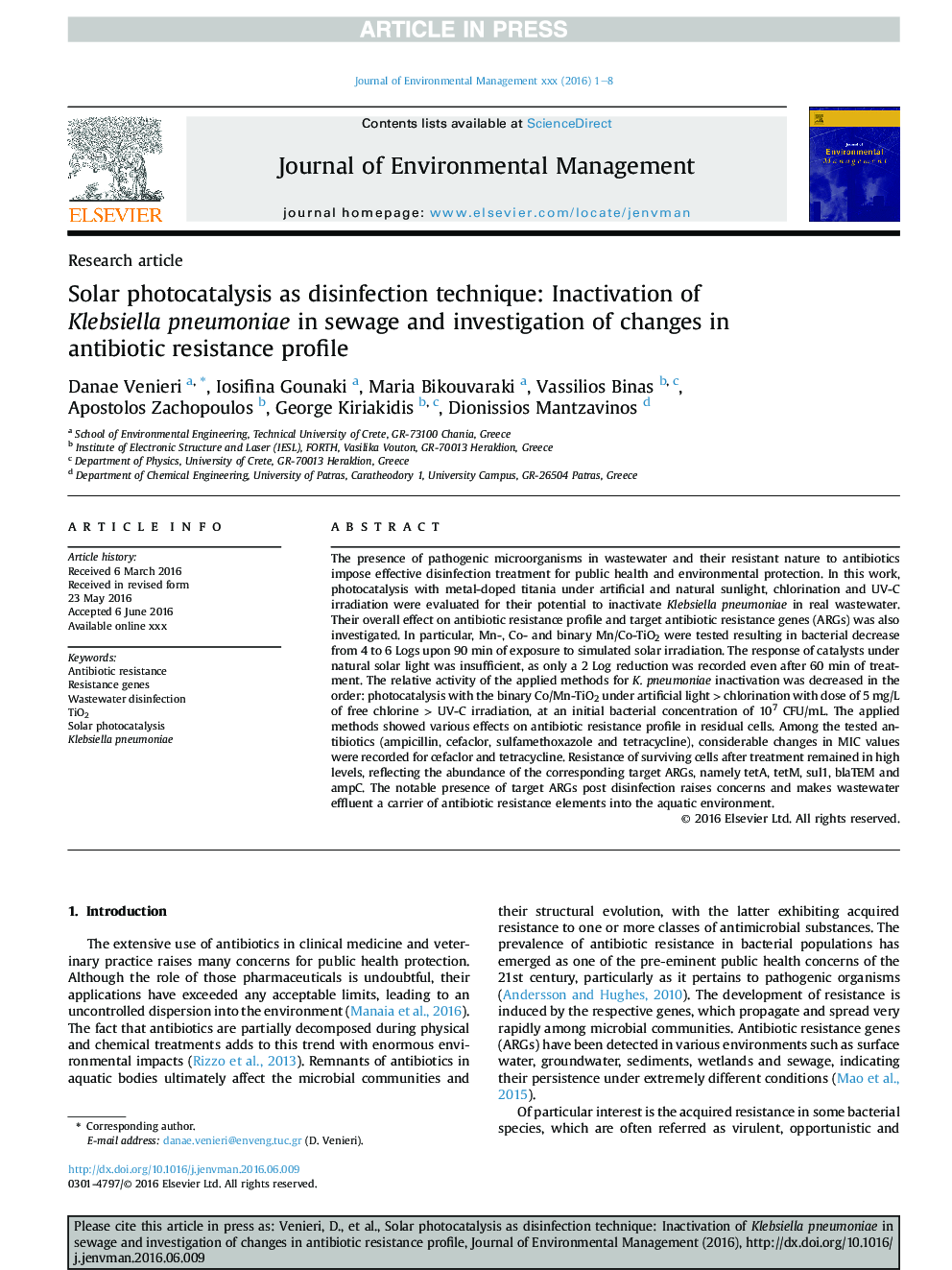| کد مقاله | کد نشریه | سال انتشار | مقاله انگلیسی | نسخه تمام متن |
|---|---|---|---|---|
| 5117005 | 1378112 | 2017 | 8 صفحه PDF | دانلود رایگان |
عنوان انگلیسی مقاله ISI
Solar photocatalysis as disinfection technique: Inactivation of Klebsiella pneumoniae in sewage and investigation of changes in antibiotic resistance profile
ترجمه فارسی عنوان
فوتوکاتالیز خورشیدی به عنوان روش ضد عفونی: غیر فعال کردن کلبسیلا پنومونیه در فاضلاب و بررسی تغییرات در مشخصات مقاومت آنتی بیوتیکی
دانلود مقاله + سفارش ترجمه
دانلود مقاله ISI انگلیسی
رایگان برای ایرانیان
کلمات کلیدی
موضوعات مرتبط
مهندسی و علوم پایه
مهندسی انرژی
انرژی های تجدید پذیر، توسعه پایدار و محیط زیست
چکیده انگلیسی
The presence of pathogenic microorganisms in wastewater and their resistant nature to antibiotics impose effective disinfection treatment for public health and environmental protection. In this work, photocatalysis with metal-doped titania under artificial and natural sunlight, chlorination and UV-C irradiation were evaluated for their potential to inactivate Klebsiella pneumoniae in real wastewater. Their overall effect on antibiotic resistance profile and target antibiotic resistance genes (ARGs) was also investigated. In particular, Mn-, Co- and binary Mn/Co-TiO2 were tested resulting in bacterial decrease from 4 to 6 Logs upon 90 min of exposure to simulated solar irradiation. The response of catalysts under natural solar light was insufficient, as only a 2 Log reduction was recorded even after 60 min of treatment. The relative activity of the applied methods for K. pneumoniae inactivation was decreased in the order: photocatalysis with the binary Co/Mn-TiO2 under artificial light > chlorination with dose of 5 mg/L of free chlorine > UV-C irradiation, at an initial bacterial concentration of 107 CFU/mL. The applied methods showed various effects on antibiotic resistance profile in residual cells. Among the tested antibiotics (ampicillin, cefaclor, sulfamethoxazole and tetracycline), considerable changes in MIC values were recorded for cefaclor and tetracycline. Resistance of surviving cells after treatment remained in high levels, reflecting the abundance of the corresponding target ARGs, namely tetA, tetM, sul1, blaTEM and ampC. The notable presence of target ARGs post disinfection raises concerns and makes wastewater effluent a carrier of antibiotic resistance elements into the aquatic environment.
ناشر
Database: Elsevier - ScienceDirect (ساینس دایرکت)
Journal: Journal of Environmental Management - Volume 195, Part 2, 15 June 2017, Pages 140-147
Journal: Journal of Environmental Management - Volume 195, Part 2, 15 June 2017, Pages 140-147
نویسندگان
Danae Venieri, Iosifina Gounaki, Maria Bikouvaraki, Vassilios Binas, Apostolos Zachopoulos, George Kiriakidis, Dionissios Mantzavinos,
